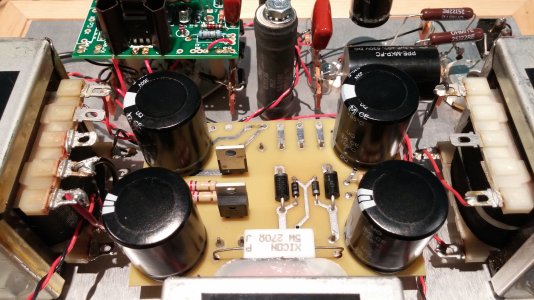rbc3
New member
After many happy hours of working well and tube rolling, my left channel Paramount is now consistently blowing a fuse. The last time it was working, I was listening to headphones with a banana plug adapter. I was listening to AKG K1000, LCD2.2, and HE-500 cans to compare how well the Paramounts drive these different cans. My adapter is a banana to 4 pin XLR that I use to quickly switch between cans. I am pretty sure I was running 1950s Western Electric 396A D getter black plate input tubes which are my newest tube purchase but had been running well for at least 5 hours when driving speakers. I was also running KR VV300B output tubes, also ran successfully for at least 20 hours in the Paramounts driving my speakers.
I checked around the amp for any weird connections or crossed wires and then replaced the stock tubes. I also went back through the resistance check and it checks out exactly as before. I noticed an arc from the pins of the AC power socket to the fuse when switching the amp on which must be what is blowing the fuse.
I figure the most likely culprit is something went wrong with the WE output tubes since they're the newest factor in the equation. I did switch the OT from 8 ohm to 4 ohm, but that was a long time ago and I've been running my 4 ohm speakers for weeks now without issue.
Any and all help in chasing down the culprit is most appreciated!
Thank you in advance.
I checked around the amp for any weird connections or crossed wires and then replaced the stock tubes. I also went back through the resistance check and it checks out exactly as before. I noticed an arc from the pins of the AC power socket to the fuse when switching the amp on which must be what is blowing the fuse.
I figure the most likely culprit is something went wrong with the WE output tubes since they're the newest factor in the equation. I did switch the OT from 8 ohm to 4 ohm, but that was a long time ago and I've been running my 4 ohm speakers for weeks now without issue.
Any and all help in chasing down the culprit is most appreciated!
Thank you in advance.

